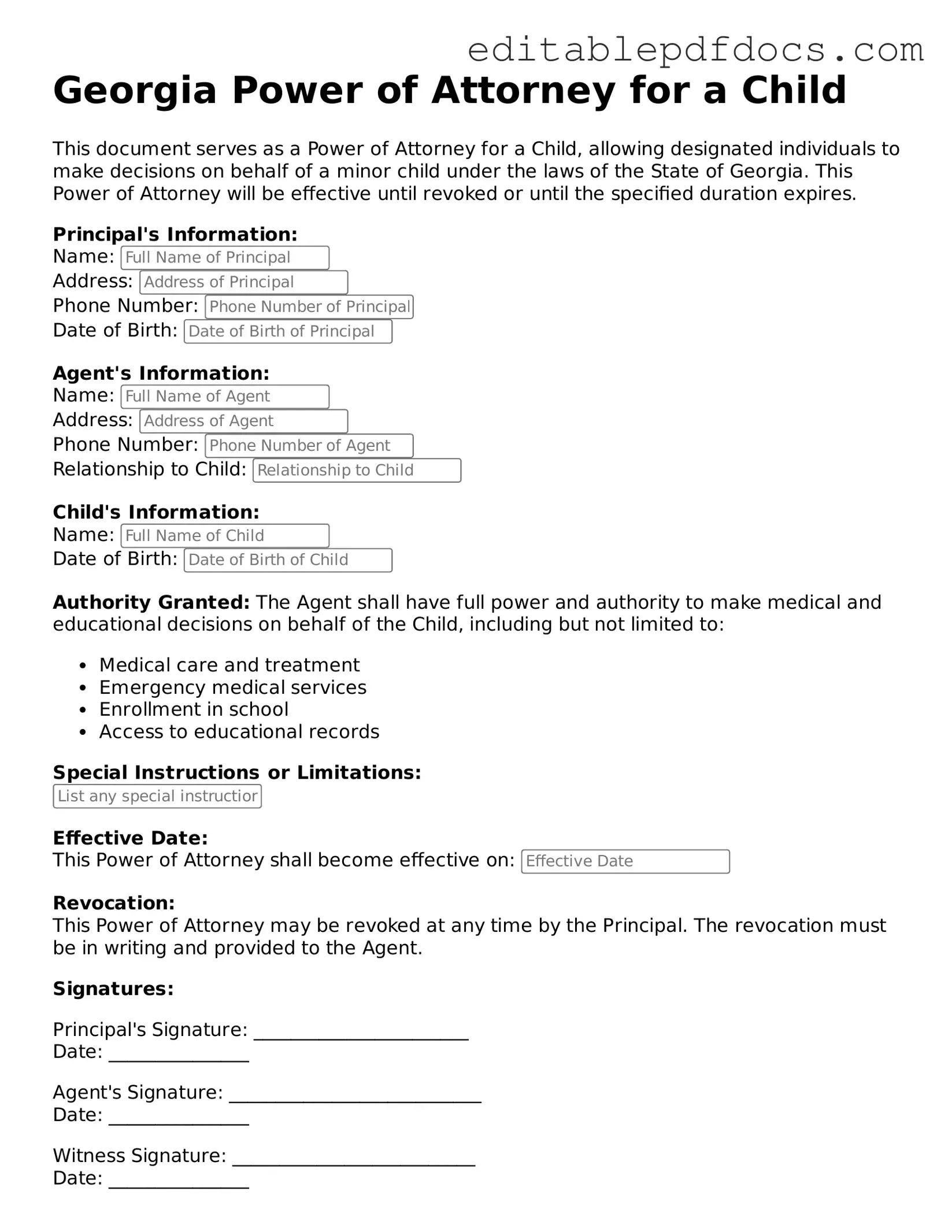Filling out a Power of Attorney for a Child form in Georgia can be a straightforward process, but mistakes can lead to significant complications. One common error is not clearly identifying the child. When completing the form, it’s essential to provide the full name and date of birth of the child. Omitting or misspelling this information can create confusion and may render the document ineffective.
Another frequent mistake is failing to specify the powers granted. The form allows for a range of responsibilities, from medical decisions to educational matters. If the language used is vague or too broad, it can lead to misunderstandings about what the designated agent is authorized to do. Being specific helps ensure that the agent can act in the best interest of the child without overstepping boundaries.
People often overlook the importance of signatures. Both the person granting the power and the designated agent must sign the document. Additionally, having a witness or notarization may be required, depending on the situation. Without proper signatures, the form may not hold up legally, leading to potential issues down the line.
Another mistake is neglecting to update the form when circumstances change. Life is unpredictable, and situations such as divorce, relocation, or changes in the child’s needs can necessitate a revision of the Power of Attorney. Keeping the document current ensures that it accurately reflects the current wishes and needs of both the child and the person granting the power.
Some individuals fail to consider the duration of the Power of Attorney. The form should clearly state how long the authority is granted. Without a defined timeframe, the agent may have indefinite power, which can lead to complications if the situation changes or if the arrangement is no longer appropriate.
Lastly, many people do not seek legal advice when needed. While the form may seem simple, legal nuances can affect its validity and effectiveness. Consulting with a legal professional can help clarify any questions and ensure that the document meets all legal requirements. This step can save time, stress, and potential legal issues in the future.
